20/20 On 2010
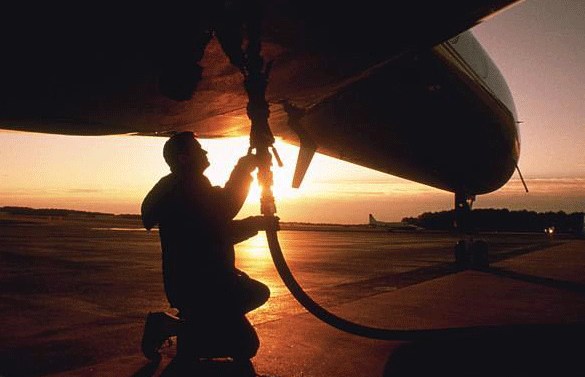
 Over
the past two decades, fuel costs have remained relatively low, accounting
for between 10 and 30 percent of operating costs, depending on transportation
modes. When oil prices began their sharp rise in 2007, the freight industry
woke up to a new reality. Petroleum’s supply curve, reflecting the
end of cheap oil and its replacement by expensive sources, such as deep-sea
exploration and tar sands, suggests a medium-term equilibrium price of
around $70 to $80 per barrel. Of course, excessive speculation and political
disruptions in sensitive countries or along critical shipping lanes could
lead to spikes well above that level. Over
the past two decades, fuel costs have remained relatively low, accounting
for between 10 and 30 percent of operating costs, depending on transportation
modes. When oil prices began their sharp rise in 2007, the freight industry
woke up to a new reality. Petroleum’s supply curve, reflecting the
end of cheap oil and its replacement by expensive sources, such as deep-sea
exploration and tar sands, suggests a medium-term equilibrium price of
around $70 to $80 per barrel. Of course, excessive speculation and political
disruptions in sensitive countries or along critical shipping lanes could
lead to spikes well above that level.
In addition, the Obama Administration’s
commitment to eradicate global warming may give full global momentum to
the carbon-trading mechanisms described in the Kyoto Protocol. The EU
has expressed hope that its Emissions Trading Scheme (ETS) after 2012
will include all greenhouse gases and all sectors, including aviation
and maritime transport.
Although polluting rights were initially
given to companies for free, the EU may auction up to 60 percent of the
next allocations. It is a safe bet that the value of a ton of carbon will
rise substantially. Once the current excess capacity is absorbed, the
combination of higher fuel costs and carbon permits will have a substantial
impact on carriers.
Assuming a global application of carbon
permits, we estimate that at $70 per barrel of oil and $42 per ton of
carbon fully auctioned, air and ocean carrier costs would rise by 6 percent
and 4 percent, respectively. At $100 per barrel and $70 a ton, those costs
would rise by 14 percent and 6 percent, respectively.
 |
|
|
Deregulation of the transportation
industry began with the 1980 Staggers Act in the U.S., which led to the
revival of the U.S. railroads. This was soon followed by deregulation
of the aviation, road and maritime industries in the U.S. In Europe, the
creation of the single market led to a defragmentation of these same industries.
At the same time a wave of privatization, starting in the United Kingdom
and spreading to the rest of Europe and Asia, led to deep restructuring
and improved efficiency among airlines, ports, airports and to a smaller
extent railways.
These productivity gains have substantially
transformed the transportation industry.
Looking forward, there is still progress
to be made, particularly in aviation (with “open skies” regulations),
European rail and some emerging countries, but the major advances are
mostly behind us. While pessimists may argue that we are entering an era
in which more interventionist governments will turn back the clock, there
seems to be recognition across the political spectrum that the gains of
deregulation were positive and should not be discarded in the name of
political expediency. Future regulation will likely focus on sustainability
more than industry structure.
Structurally, the main trend in the freight
industry has been horizontal integration, namely mergers and acquisitions
among competitors and overlapping or complementary networks. In container
shipping, for example, Maersk acquired rivals Sealand, P&O Nedlloyd
and Safmarine. Other deals include CMA’s purchase of CGM and NOL’s
acquisition of APL. In 2000, the top eight container shipping lines accounted
for 37 percent of global capacity. Today that number is 54 percent.
Consolidation also resulted in the formation
of global container port companies, in particular Dubai Ports (which includes
the acquisition of P&O Ports), PSA and Hutchison Port Holdings.
In air, the trend is still hampered by bilateral
regulations, but that has not stopped the merger of Air France and KLM,
the acquisition of smaller carriers by Lufthansa, the long merger discussions
between British Airways and Iberia, and interest from Middle Eastern carriers
in European ones. Global airport groups have also been formed.
 In
parcels, DHL has built its European road network, as has TNT. The GeoPost
group was formed from various DPD franchises. In rail, the number of Class
I railroads in the United States has consolidated into just five. In Europe,
Deutsche Bahn Cargo has acquired the incumbent cargo railways in Denmark,
the Netherlands and the United Kingdom, and other rail freight operators
in Spain, Switzerland and Italy. In
parcels, DHL has built its European road network, as has TNT. The GeoPost
group was formed from various DPD franchises. In rail, the number of Class
I railroads in the United States has consolidated into just five. In Europe,
Deutsche Bahn Cargo has acquired the incumbent cargo railways in Denmark,
the Netherlands and the United Kingdom, and other rail freight operators
in Spain, Switzerland and Italy.
A few giant operators led by DHL, Schenker,
Kühne & Nagel, Panalpina, Expeditors and a few others, although
still fragmented, now dominate the freight forwarding industry.
Vertical integration, upstream or downstream
into other components of the same value chain, has occurred but not as
often as horizontal integration. For example, some ocean carriers increased
their “retail” capabilities by reducing their reliance on
forwarders and offering a door-to-door product. They integrated into port
terminal operations and inland road and rail transport. Others, mostly
air carriers, have tried to emulate integrators by creating different
classes of products and forming partnerships with forwarders. However,
carrier and forwarder fragmentation has made it difficult to offer truly
“integrated” products, particularly on the air side. Different
information systems, multiple networks and the fear of alienating other
partners have proven to be substantial hurdles.
“One-stop-shop” integration—offering
a broad range of more or less related services— went through a new
wave after the dismantling of the P&O and Nedlloyd transport conglomerates.
However, synergies proved too elusive for a number of these groups, and
the jury is still out for others. In most cases, there is little overlap
between traditional freight forwarder volumes and rail cargo (except in
North America, where intermodal freight is big business), and between
project-based contract logistics and freight forwarder activities.
Gordon Feller |






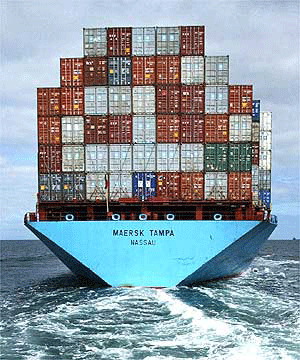
 In
parcels, DHL has built its European road network, as has TNT. The GeoPost
group was formed from various DPD franchises. In rail, the number of Class
I railroads in the United States has consolidated into just five. In Europe,
Deutsche Bahn Cargo has acquired the incumbent cargo railways in Denmark,
the Netherlands and the United Kingdom, and other rail freight operators
in Spain, Switzerland and Italy.
In
parcels, DHL has built its European road network, as has TNT. The GeoPost
group was formed from various DPD franchises. In rail, the number of Class
I railroads in the United States has consolidated into just five. In Europe,
Deutsche Bahn Cargo has acquired the incumbent cargo railways in Denmark,
the Netherlands and the United Kingdom, and other rail freight operators
in Spain, Switzerland and Italy. 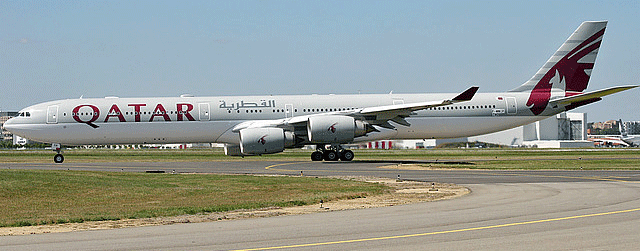
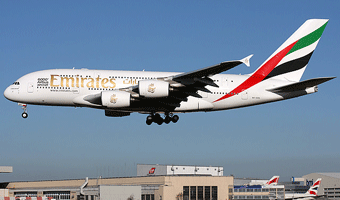 The financial problems vexing Dubai
are real, but the emirate is too small to matter for the broader regional
economic prospects. Its economy accounts for about 8% of the GCC's overall
GDP and about 2% of the overall GDP of the EMEA region. Nevertheless,
the announcement by Dubai World – a state owned conglomerate –
on 25 November that it would request a debt standstill from its creditors
was a reminder that the global economy is still working its way out of
the credit crisis of 2008 and the Great Recession of 2009.
The financial problems vexing Dubai
are real, but the emirate is too small to matter for the broader regional
economic prospects. Its economy accounts for about 8% of the GCC's overall
GDP and about 2% of the overall GDP of the EMEA region. Nevertheless,
the announcement by Dubai World – a state owned conglomerate –
on 25 November that it would request a debt standstill from its creditors
was a reminder that the global economy is still working its way out of
the credit crisis of 2008 and the Great Recession of 2009. 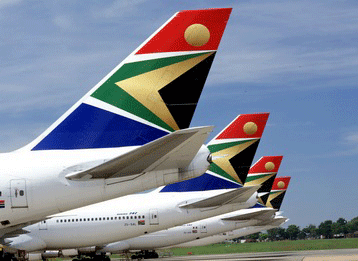 Countries
on the African continent with stronger linkages to the international capital
markets -- such as South Africa and Kenya -- were the first ones hit by
the global financial crisis, through an adjustment in their exchange rates.
But as the financial crisis evolved into the Great Recession of 2009,
the fall in commodity prices and the weakening external demand for commodities
led to a broad-based slowdown on the continent.
Countries
on the African continent with stronger linkages to the international capital
markets -- such as South Africa and Kenya -- were the first ones hit by
the global financial crisis, through an adjustment in their exchange rates.
But as the financial crisis evolved into the Great Recession of 2009,
the fall in commodity prices and the weakening external demand for commodities
led to a broad-based slowdown on the continent. 